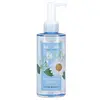What's inside
What's inside
 Key Ingredients
Key Ingredients

 Benefits
Benefits

 Concerns
Concerns

No concerns
 Ingredients Side-by-side
Ingredients Side-by-side

Paraffinum Liquidum
EmollientMacadamia Integrifolia Seed Oil
Skin ConditioningPEG-20 Glyceryl Triisostearate
EmollientCetyl Ethylhexanoate
EmollientPEG-10 Isostearate
EmulsifyingWater
Skin ConditioningCarthamus Tinctorius Seed Oil
MaskingSimmondsia Chinensis Seed Oil
EmollientAnthemis Nobilis Flower Water
MaskingC12-15 Alkyl Benzoate
AntimicrobialIsohexadecane
EmollientIsopropyl Myristate
EmollientDicaprylyl Carbonate
EmollientTocopheryl Acetate
AntioxidantTocopherol
AntioxidantBHT
AntioxidantDehydroacetic Acid
PreservativeParfum
MaskingLimonene
PerfumingLinalool
PerfumingHexyl Cinnamal
PerfumingBenzyl Benzoate
AntimicrobialBenzyl Alcohol
PerfumingParaffinum Liquidum, Macadamia Integrifolia Seed Oil, PEG-20 Glyceryl Triisostearate, Cetyl Ethylhexanoate, PEG-10 Isostearate, Water, Carthamus Tinctorius Seed Oil, Simmondsia Chinensis Seed Oil, Anthemis Nobilis Flower Water, C12-15 Alkyl Benzoate, Isohexadecane, Isopropyl Myristate, Dicaprylyl Carbonate, Tocopheryl Acetate, Tocopherol, BHT, Dehydroacetic Acid, Parfum, Limonene, Linalool, Hexyl Cinnamal, Benzyl Benzoate, Benzyl Alcohol
 Reviews
Reviews

Ingredients Explained
These ingredients are found in both products.
Ingredients higher up in an ingredient list are typically present in a larger amount.
Macadamia Seed oil is an emollient. It is rich in fatty acids: oleic, linoleic, and palmitoleic.
An an emollient, macadamia seed oil helps hydrate the skin by creating a thin film on top. This film prevents moisture from evaporating.
Due to the fatty acid content of this ingredient, it may not be Malassezia folliculitis safe.
Learn more about Macadamia Integrifolia Seed OilThis oil comes from the seeds of the desert shrub called Jojoba. It is more commonly known as jojoba oil, a non-comedogenic oil.
Jojoba oil does not contain fragrance and has many fatty-acids, making it a great soothing ingredient.
It also contains Vitamin E, a great moisturizing ingredient. Vitamin E is also an antioxidant and protects your skin against oxidative damage.
This ingredient humectant properties, meaning it helps draw moisture from the air. This helps keep your skin hydrated.
While jojoba has antibacterial properties, it is only able to kill some strains of bacteria.
Studies also show it helps in wound healing. In fact, Indigenous cultures have used jojoba as a moisturizer and to help treat burns for centuries.
Fun fact: Jojoba oil similar to natural human skin sebum, so it has a great effect on dry skin. It is also promising with helping to regulate sebum production.
Due to its fatty acid content, Jojoba oil may not be fungal acne safe. We recommend speaking with a professional if you have any concerns.
Learn more about Simmondsia Chinensis Seed OilTocopherol (also known as Vitamin E) is a common antioxidant used to help protect the skin from free-radicals and strengthen the skin barrier. It's also fat soluble - this means our skin is great at absorbing it.
Vitamin E also helps keep your natural skin lipids healthy. Your lipid skin barrier naturally consists of lipids, ceramides, and fatty acids. Vitamin E offers extra protection for your skin’s lipid barrier, keeping your skin healthy and nourished.
Another benefit is a bit of UV protection. Vitamin E helps reduce the damage caused by UVB rays. (It should not replace your sunscreen). Combining it with Vitamin C can decrease sunburned cells and hyperpigmentation after UV exposure.
You might have noticed Vitamin E + C often paired together. This is because it is great at stabilizing Vitamin C. Using the two together helps increase the effectiveness of both ingredients.
There are often claims that Vitamin E can reduce/prevent scarring, but these claims haven't been confirmed by scientific research.
Learn more about Tocopherol